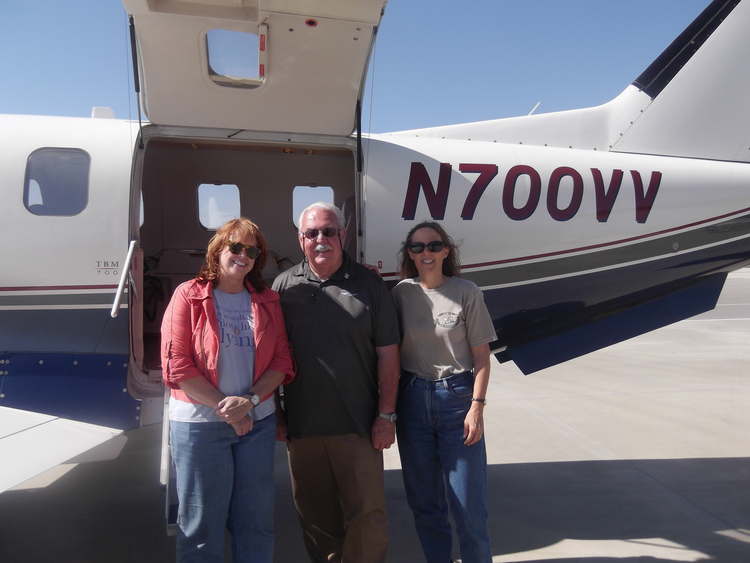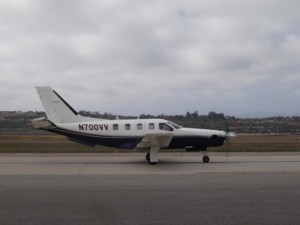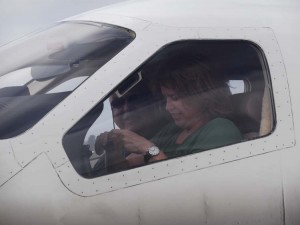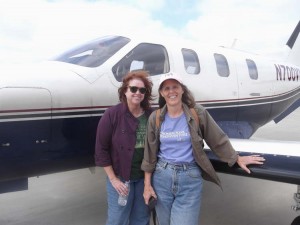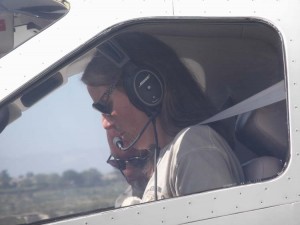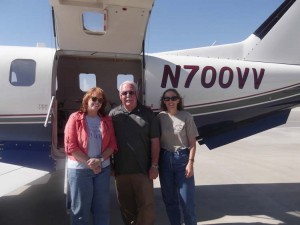Each year our insurance company requires us to do a recurrency training programing in our TBM-700. In many corporate departments one does the annual or semi-annual training at a simulation center like Flight Safety, SimCom, CAE, etc. SimCom does have TBM-700 training and Nancy did her initial training at SimCom with her flying buddy Marcie. However, since then we have upgrade the avionics in our plane and now the match to the simulator is not sufficient to make that option viable in our minds.
I did my initial training with Walt Adair at Turbine Solutions Inc. and 1st recurrency and now my 2nd recurrency with him. This was Nancy’s first recurrency and first time with Walt. Marcie Smith, Nancy’s flying buddy, attended and audited the course with us.
We departed on Tuesday afternoon and flew down to San Jose for a quick turn to pick up Marcie. We were only on the ground for about an hour, but due to the wind our bird was already cooler than the warm start process (required above 120 deg C of TIT), which was quite nice. We arrived at KCMA (Camarillo) at about 8:30PM and checked in to the local Residence Inn.
Wednesday was a day for Ground School and we spent about 9 hours with Walt going over various Powerpoint presentations and collateral materials while taking a quiz here or there. We spent time analyzing several of the TBM failures and accidents so we can understand where our vulnerabilities might be. As I recall, the accidents to date have been attributed primarily to human error (not mechanical failures).
The next day I flew first to do the IFR portion of our flying syllabus since the ceilings were low. Nancy and Marcie rode along in the back. I did about 7 approaches various places including some with a variety of simulated failures. Several approaches were flown as well as coupled approaches. They were just about within standards and only had one major faux pas. Just after coupling the autopilot during a missed approach climb out I disengaged the composite mode on the EFIS while it was rolling into a bank. I didn’t realize changing this mode disengaged the autopilot. In the process of handling some other clean up issues I overcompensated and ended up in bank the other way (ouch! … get that scan going). We also practiced holds.
Nancy flew in the afternoon and did the air-work portion of the flight syllabus. So this is steep turns, emergency descents, torque roll demo (Walt does this and Nancy says once is enough for her), stall sequence, slow flight, crank down the landing gear manually, simulated engine out glide to an airport with simulated dead-stick landing and then about 7 different styles of take offs and landings.
The next day we switched and I did the airwork syllabus and Nancy did the IFR syllabus. Her last landing was a GPS LPV approach to KCMA on Standby Generator (failed generator) with essential bus selected, failed HSI (so was in composite mode), and with no flaps. Needless to say she was busy.
Then Marcie got a flight with some airwork and a couple of landings. All in all we kept Walt busy non-stop for 3 days. We flew back to San Jose the last day (Friday) and dropped off Marcie.
We stayed the night in San Jose and then flew back the next morning. We had a ground speed of 373 knots at one point (strong tailwind component) and landing in rain and low ceilings. Nancy made the GPS approach (with no vertical guidance) into KDLS and nailed it. So the training paid off for her.
Now Nancy and Marcie need to prep for their East Coast adventure in the TBM in just about 2 weeks.
Share this Post
